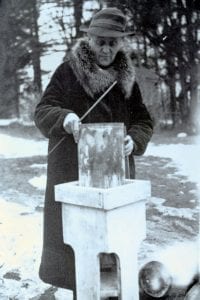Who uses the post office? In 2019, 143 billion pieces of mail were sent to 160 million delivery addresses, with more than 31,000 offices being operated.
Baby boomers and those who live in rural areas rely on the USPS to receive prescriptions and social security checks as well as pay bills more so than other demographic groups. But in a presidential election year, especially one during a pandemic where many are hesitant to cast their votes in person, mail-in voting could be what allows so many the chance to participate in democracy.
Perhaps more importantly, it could possibly show just how amazing democracy can be if even more people are enfranchised.
It’s been evidenced at the very local level. Residents were sent ballots for their school district budgets and trustee elections directly in the mail. What we saw was a massive increase in the numbers of ballots cast amongst all our local districts. The Smithtown school district, for example, saw over 8,000 more people cast votes compared to 2019 numbers.
This is an example of how granting easier access to voting will result in more votes cast. How important is this? In 2016, only 58.1% of the voting age population cast their ballots, and that was during a presidential election year.
Despite fears that mail-in ballots will somehow lead to voter fraud, experts have consistently said that states that have mail-in voting systems have not experienced notable numbers of fake or false ballots more than states lacking such systems..
It is in everyone’s interest to have more people participating in democracy.
And with the White House’s constant refrain that voter fraud could occur if mail-in ballots are widely used, and with the administration having threatened to withhold funds from the USPS, it’s necessary to cast a critical eye on the controversial changes made by Postmaster General Louis DeJoy. His decisions have led to overtime cuts, reduced post office hours, changes to delivery policies and the removal of some sorting machines. The changes have already led to mail delays, including on Long Island, according to the Letter Carriers Local 6000, a L.I. and Queens-based postal union. Though DeJoy announced Aug. 18 he would be “suspending these initiatives” until after the election, we must remain alert. The postal agency itself has said delivering an estimated 80 million ballots nationwide will be difficult.
Instead we should now focus on making sure the process runs as smoothly as possible. It’s true that the New York and California Democratic primaries were hurt by an inefficient infrastructure that was not made to handle the mass influx of votes. Reports say that thousands of such votes had to be discounted because of flaws by the people who cast them.
The goal of the Suffolk County Board of Elections should be to increase its capability to handle what will likely be a mass influx of both mail-in and absentee ballots. Better yet, it should be incumbent on the federal government to supply local municipalities the capability to handle the new influx of votes.
We agree with Congressman Tom Suozzi (D-NY3), who at a press conference Aug. 17 said we needed an “urgent call to arms to break through all the noise and focus on protecting not only the security of our elections, but the integrity and reliability of the United States Postal Service. Lives, livelihoods and our democracy are at stake.”
We need to extend this thought process to the efficacy of our democracy itself. Improving people’s ability to vote should be a no-brainer in a society such as ours. We must cut through partisanship and remember just how important it is that every person should have a voice in government, despite — or more so, because of — the ongoing pandemic.























